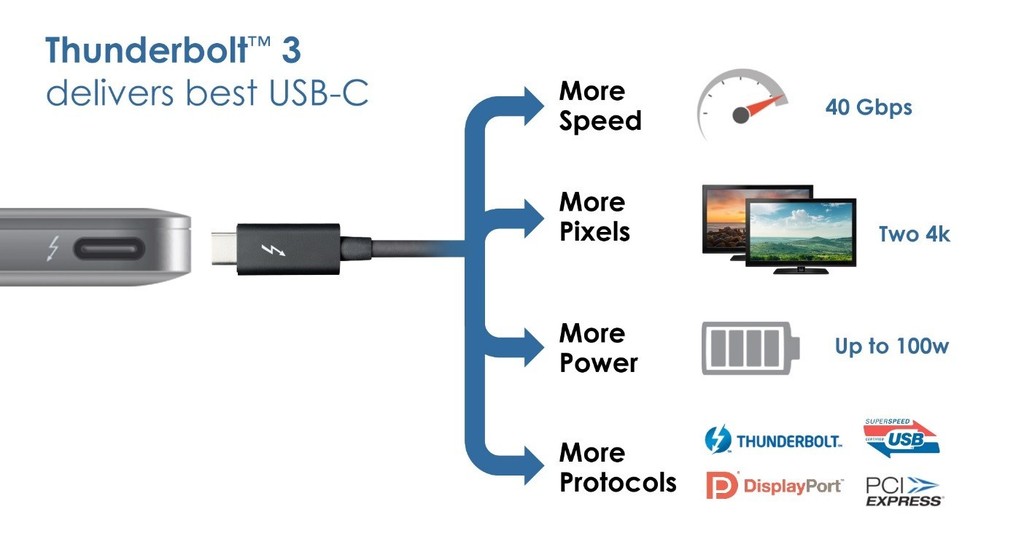Entire MacBook line to get USB-C connectors in future iterations
Thunderbolt 3, the latest, most powerful iteration of the Thunderbolt port, and Intel’s very own take on integrating USB-C connectivity into Mac products, is likely to spread across all future MacBook versions.
The scenario has become more than likely, as Intel has fully embraced the standard, and endorsed it in a public statement about the new technology being implemented in all future Thunderbolt products, published today June 2nd 2015.

Thunderbolt 3’s adaptation of USB 3.1 adds unprecedented features, such as a truly universal interface in which to plug multiple devices traditionally at opposite ends of the spectrum, like displays, external drives, and peripherals. The MacBook’s main power supply will also be supplied by Thunderbolt 3, with support up to 100w.
USB-C integration in Thunderbolt 3 allows for a staggering increase in transfer speed, up to 40Gbps, making it ideal for transferring large files, and to carry video signal for up to two 4K displays simultaneously. This is especially good news for gamers, as support for external graphics through Thunderbolt 3 allows to play above and beyond the recommended resolution settings.
P2P connection
Another very good reason to believe that Thunderbolt 3 will take over the majority of the connectors in future MacBooks is the ability to connect two MacBooks, and transfer files directly, at speeds up to 10GbE, and because the standard is backward compatible with Thunderbolt 2, previous generation MacBooks that include Thunderbolt 2, will enjoy connectivity at the maximum speed allowed by their standard. Peer-To-Peer connectivity with Thunderbolt 3 technology allows to chain-link up to 6 devices.
Future MacBook
Whether we follow the news, or we keep a finger on the pulse of the United States Patents and Trademarks Office, it’s clear that Apple is decidedly moving to the next step of its evolution. Only in the past weeks, we have learned about 4K, then 5K support in MacBooks, followed by Augmented Reality in iOS, and most recently, the possibility that trackpads could one day be made obsolete by turning keyboards into multi-touch trackpads, by implementing Force Touch into each individual key.
The question is: how fast will Apple get there?